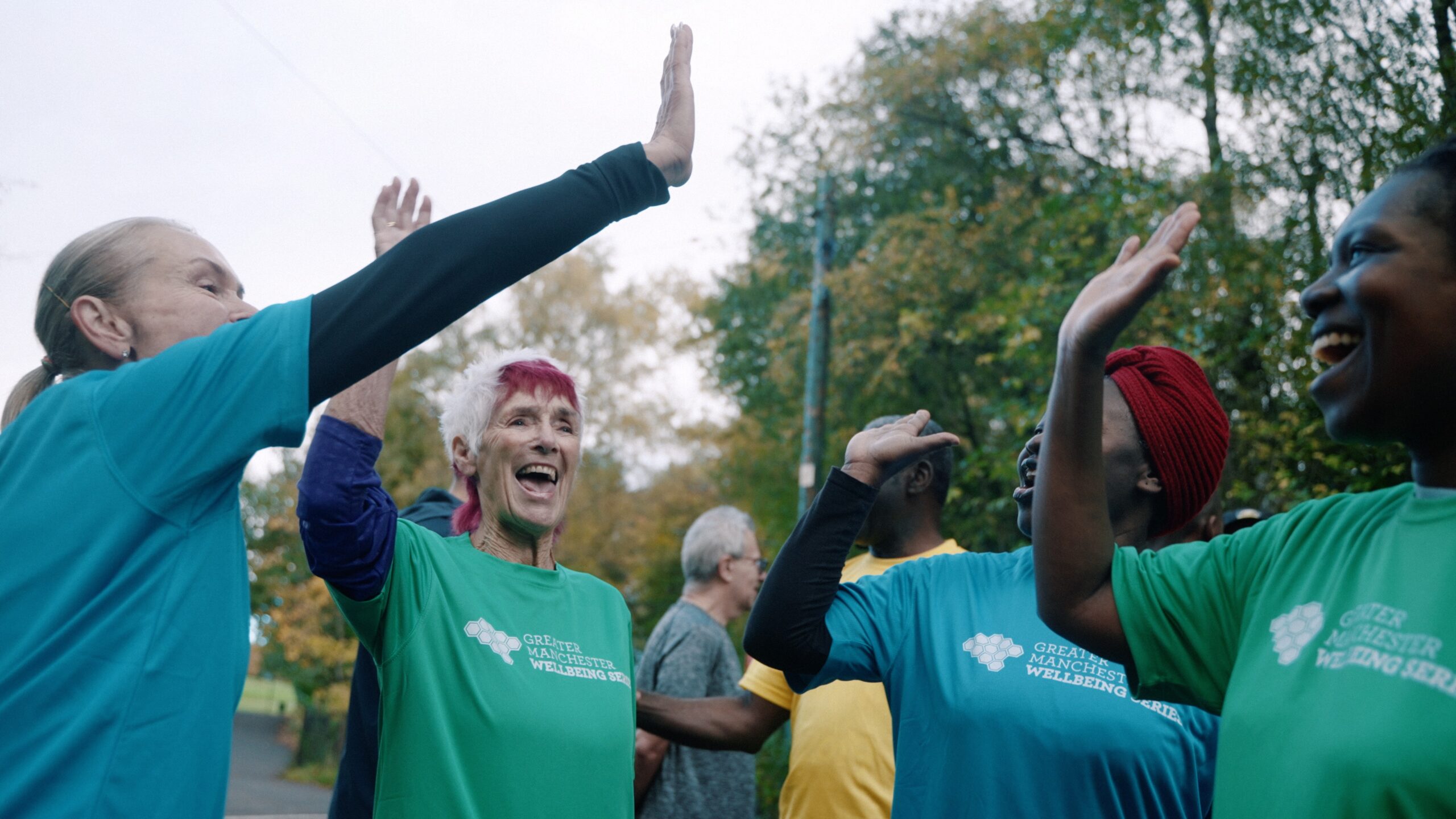In this article, Sierra Domb, founder of the Visual Snow Initiative, advocate, and research collaborator, examines the intersection of homeostasis (the body’s internal balance) with neurological, immune, and sensory health, offering practical, science-based strategies to support biological resilience and overall well-being.
No matter how much time passes or how circumstances shift, there is one relationship we carry with us for life: the one we have with ourselves. The body we are born with, not by our own design or control, is our forever companion, our metaphorical home. It enables us to exist, experience, and feel. Whether we start life with a body that already faces health challenges or one that seems perfectly fine, a variety of stressors and health issues will inevitably impact us all to varying degrees at some point in life.
At the core of how we manage these challenges is a crucial physiological process: homeostasis. This is our body’s intrinsic regulatory system that maintains internal balance, ensuring that our physical and mental well-being remain stable despite external pressures.
“The body we are born with, not by our own design or control, is our forever companion, our metaphorical home. It enables us to exist, experience, and feel.”
Why we need to understand homeostasis
Understanding homeostasis can help us better combat these inevitable stressors, providing us with insight into how our bodies work to maintain equilibrium amidst life’s fluctuations. As someone who has lived with health challenges such as autoimmune dysregulation and Erythromelalgia since childhood, and later developed Visual Snow Syndrome in 2015, I have become deeply aware of how crucial it is to care for the body as our home. When homeostasis is disrupted, it can impact nearly every aspect of health, from neurological and immune function to emotional well-being.
In an ideal world, stress and health challenges would be avoidable, but they are an inherent part of life. Various stressors will impact us, and at some point, health conditions, whether severe or mild, are likely to take a toll on us or those we care about to some degree. Yet, too often, self-care for both mind and body is undervalued.
Today’s world tends to prioritize productivity, often at the expense of our health. We are expected to give relentlessly, do our best even when we do not feel our best, and push through until our bodies demand a pause, sometimes when it is already too late. Even when we want to care for ourselves, we are often presented with barriers like time constraints, financial strain, lack of resources, or a limited support system, making it that much more difficult to prioritize our health.
“When homeostasis is disrupted, it can impact nearly every aspect of health, from neurological and immune function to emotional well-being.”
Homeostasis, stress and health challenges
For those of us already living with medical conditions, our bodies often operate with a narrower margin for error. Navigating my own medical conditions has deepened my understanding of how fragile the body’s internal equilibrium can become, particularly the balance between the nervous system, immune responses, and overall physiological regulation.
Many people with medical issues are more susceptible to even subtle shifts in internal or external stressors. Whether physical, emotional, or environmental, even subtle changes can push the body out of balance, triggering flare-ups, worsening inflammation, or affecting nervous system regulation. This is important because understanding the fragility of the body’s internal balance, (specifically the delicate coordination between the nervous system, immune responses, and overall physiological regulation) can shed light on why disruptions in homeostasis can lead to complex health challenges. When this balance is compromised, it affects the body’s ability to function properly, which can lead to the worsening of existing conditions, new symptoms, or a general decline in well-being.
And this is not just true for chronic medical conditions. Many commonplace health issues, especially those affecting the nervous system, are triggered or made worse by stress. Even those in perfect health have most likely felt their body react to stress: a racing heart, a headache, or stomach tension. For most people, these disruptions are temporary, but for those of us living with chronic conditions, the body sometimes struggles to get back to baseline. I have learned that even minor shifts can have major consequences, often for the worse and sometimes, for the better.

This is why I advocate for a practical, science-driven approach to health, emphasizing the importance of accessible tools to help manage our health, especially in a world where quality care (unfortunately) can be difficult to come by. I have spent years searching for answers, often without being informed that simple, scientifically-supported methods could meaningfully enhance my brain health, nervous system, immune function, and overall bodily regulation. Learning to support homeostasis through informed adjustments, self-regulation strategies, and medical insight can be incredibly helpful. Even small steps toward restoring balance can create a more stable foundation for managing symptoms and improving overall well-being.
Homeostasis, therefore, plays a vital role in maintaining that balance. This ongoing process adjusts behind the scenes to ensure that our internal systems, from the brain to the immune system, continue to function properly. When disruptions, such as stress, illness, or neurological or autoimmune dysfunction, interfere with homeostasis, they can affect every system in the body, from sensory processing to inflammation. This reminds us of just how interconnected and sensitive our internal world truly is.
“Learning to support homeostasis through informed adjustments, self-regulation strategies, and medical insight can be incredibly helpful. Even small steps toward restoring balance can create a more stable foundation for managing symptoms and improving overall well-being.”
Supporting homeostasis is crucial, not by controlling every outcome, but by understanding how the body’s systems function together and using that knowledge to promote internal balance and overall health. For individuals with chronic medical conditions, as well as those without, supporting homeostasis should be an accessible necessity. While not curative or intended to replace medical interventions such as surgery or medication, additional science-based practices may offer measurable and tangible benefits, especially if, like many of us, you are facing long delays in receiving care, waiting for an appointment, or have limited access to healthcare. These practices can also complement a comprehensive health management strategy.
Maintaining homeostasis, especially for neurological and autoimmune health, requires integrating evidence-based strategies that promote physiological balance. In addition to addressing structural or anatomical issues requiring medical interventions such as medications or procedures, non-invasive, practical approaches can support homeostasis.
Practical strategies to support homeostasis
Scientific research has highlighted the benefits of interventions such as mindfulness and mindfulness-based interventions (e.g., Mindfulness-Based Cognitive Therapy), exercise, nutrition, sleep, stress management, and electrolyte balance. Additionally, strategies like proper hydration, reducing overstimulation, preventing overexertion, and regulating hormones are vital for optimizing physiological function.
As noted, while methods like mindfulness and nervous system retraining may not provide cures, they can complement medical care and serve as practical tools to improve network dysfunction and support the body in tangible ways, especially when access to care is delayed or limited. These practical tools can help promote balance in the body, assist in managing existing conditions, reduce flare-ups, and enhance well-being, even for those without chronic health concerns.
Mindfulness
Mindfulness and Mindfulness-Based Cognitive Therapy, or MBCT, have been shown to potentially regulate the autonomic nervous system and modulate dysfunctional brain networks, particularly the default mode and salience networks.^1 These practices may reduce stress, inflammation, and cognitive strain, all of which have been implicated in disrupting homeostasis.^2 For example, mindfulness meditation has been shown to reduce inflammation biomarkers in individuals experiencing chronic stress.^3 In autoimmune conditions such as rheumatoid arthritis, mindfulness-based interventions have been shown to potentially decrease pro-inflammatory cytokines, which may help stabilize immune function and support physiological balance.^4,5
“Scientific research has highlighted the benefits of interventions such as mindfulness and mindfulness-based interventions (e.g., Mindfulness-Based Cognitive Therapy), exercise, nutrition, sleep, stress management, and electrolyte balance. Additionally, strategies like proper hydration, reducing overstimulation, preventing overexertion, and regulating hormones are vital for optimizing physiological function.”
Breathing
Breathing exercises, particularly diaphragmatic breathing, can also play a role in supporting homeostasis by activating the parasympathetic nervous system, which helps counteract the effects of stress. Deep breathing has been shown to potentially reduce C-reactive protein levels, a marker of inflammation, while breathing exercises may help reduce neuroinflammation, further supporting immune and neurological stability.^6,7
Exercise
Exercise has been shown to contribute to homeostasis by improving circulation, reducing inflammation, and supporting the body’s stress response.^8 Regular physical activity may reduce the risk of neurological diseases, such as Alzheimer’s and dementia.^9,10 For individuals with autoimmune conditions, exercise can potentially reduce disease activity and improve physical function.^11 Furthermore, aerobic exercise may reduce inflammation and improve cognitive function in individuals with multiple sclerosis.^12
Sleep
Sleep also plays a critical role in regulating immune function and brain health, both of which are essential for homeostasis. Sleep deprivation has been shown to potentially increase pro-inflammatory cytokines, exacerbating autoimmune and neurological conditions.^13,14 Poor sleep quality has also been linked to more severe flare-ups in autoimmune diseases.^15 In contrast, adequate sleep, typically 7-9 hours per night, may reduce inflammation and improve immune function, thereby supporting homeostasis.^16
Limiting overstimulation
Maintaining homeostasis involves several physiological processes that work together to keep the body’s internal environment stable. Limiting overstimulation, such as exposure to loud noises or overwhelming sensory input, is important for regulating the nervous system. Chronic stress from overstimulation can disrupt autonomic functions, leading to an imbalance in the body’s stress response, temperature regulation, and immune function.^17 Reducing overstimulation helps mitigate these effects and supports homeostasis.
Hormonal balance
Hormonal balance also plays a key role, with proper nutrition, exercise, and sleep contributing to the regulation of metabolic processes, growth, mood, and the body’s stress response.^18 Scientific evidence shows that maintaining electrolyte balance, specifically of sodium, potassium, calcium, and magnesium, is essential for proper nerve function and muscle contraction, which are crucial for overall homeostasis.^19
Nutrition
Adequate hydration and nutrition support this balance.^19,20 Furthermore, moderate sun exposure facilitates the production of Vitamin D, which is necessary for immune system function, calcium absorption, and bone health.^21
Avoiding Overexertion
Finally, avoiding overexertion helps prevent physiological stress, supporting the maintenance of homeostasis by avoiding strain on metabolic and physiological systems.
Conclusion
Collectively, these factors can help regulate internal stability, ensuring that the body’s systems function optimally.
While serious medical conditions require accurate diagnosis and treatment under the guidance of a qualified healthcare professional, incorporating evidence-based strategies in conjunction with medical care can further support homeostatic balance and physiological stability. These are some of the practical strategies that may help reduce flare-ups, manage chronic conditions, and improve overall health.
There are additional strategies as well. For individuals without health conditions, these methods can also promote general well-being and, in some cases, support prevention. By utilizing scientifically-supported methods to encourage homeostasis, individuals can potentially enhance their health, whether managing a health condition or maintaining overall well-being.
Note: It is important to consult with a healthcare professional to determine the most appropriate approach based on individual needs and circumstances.
References
- Wong, S.H. et al., 2024. ‘Visual snow syndrome improves with modulation of resting-state functional MRI connectivity after mindfulness-based cognitive therapy: An open-label feasibility study’, Journal of Neuro-Ophthalmology, 44(1), pp.112-118. https://doi.org/10.1097/WNO.0000000000002013
- Zeidan, F. et al., 2010. ‘Mindfulness meditation improves cognition: Evidence of brief mental training’, Consciousness and Cognition, 19(2), 597-605. https://doi.org/10.1016/j.concog.2010.03.014
- Moreno, J., 2024. ‘Modulation of inflammatory response and pain by mind-body therapies as meditation’, Brain Behavior and Immunity Integrative, 5, 100036. https://doi.org/10.1016/j.bbii.2023.100036
- Slagter, L., Demyttenaere, K., Verschueren, P. & De Cock, D., 2022. ‘The effect of meditation, mindfulness, and yoga in patients with rheumatoid arthritis’, Journal of Personalized Medicine, 12(11), 1905. https://doi.org/10.3390/jpm12111905
- Alhawatmeh, H., Najadat, I., Hweidi, I., & Abuhammad, S., 2024. ‘The impact of mindfulness meditation on pro-inflammatory biomarkers in patients with end-stage renal disease: A randomized trial’, SAGE Open Medicine, 12, 20503121241308995. https://doi.org/10.1177/20503121241308995
- Li, T.T. et al., 2023. ‘Effect of breathing exercises on oxidative stress biomarkers in humans: A systematic review and meta-analysis’, Frontiers in Medicine, 10, 1121036. https://doi.org/10.3389/fmed.2023.1121036
- Maniaci, G. et al., 2024. ‘Neurobiological and anti-inflammatory effects of a deep diaphragmatic breathing technique based on neofunctional psychotherapy: A pilot RCT’, Stress and Health, 40(6), e3503. https://doi.org/10.1002/smi.3503
- Nieman, D.C. & Wentz, L.M., 2019. ‘The compelling link between physical activity and the body’s defense system’, Journal of Sport and Health Science, 8(3), pp.201-217. https://doi.org/10.1016/j.jshs.2018.09.009
- De la Rosa, A. et al., 2020. ‘Physical exercise in the prevention and treatment of Alzheimer’s disease’, Journal of Sport and Health Science, 9(5), pp.394-404. https://doi.org/10.1016/j.jshs.2020.01.004
- Hou, C. et al., 2025. ‘Active Travel Mode and Incident Dementia and Brain Structure’, JAMA Network Open, 8(6), e2514316. https://doi.org/10.1001/jamanetworkopen.2025.14316
- Scheffer, D.D.L. & Latini, A., 2020. ‘Exercise-induced immune system response: Anti-inflammatory status on peripheral and central organs’, Biochimica et Biophysica Acta: Molecular Basis of Disease, 1866(10), 165823. https://doi.org/10.1016/j.bbadis.2020.165823
- Zameer, U. et al., 2024. ‘Empowering Minds and Bodies: The Impact of Exercise on Multiple Sclerosis and Cognitive Health’, Annals of Neurosciences, 31(2), pp.121-123. https://doi.org/10.1177/09727531241227674
- Al-Rashed, F. et al., 2025. ‘Impact of sleep deprivation on monocyte subclasses and function’, Journal of Immunology, 214(3), pp.347-359. https://doi.org/10.1093/jimmun/vkae016
- Garbarino, S. et al., 2021. ‘Role of sleep deprivation in immune-related disease risk and outcomes’, Communications Biology, 4(1), 1304. https://doi.org/10.1038/s42003-021-02825-4
- Faraut, B. et al., 2012. ‘Immune, inflammatory and cardiovascular consequences of sleep restriction and recovery’, Sleep Medicine Reviews, 16(2), pp.137-149. https://doi.org/10.1016/j.smrv.2011.05.001
- Singh, K.K. et al., 2024. ‘Sleep and immune system crosstalk: Implications for inflammatory homeostasis and disease pathogenesis’, Annals of Neurosciences, 32(3), pp.196-206. https://doi.org/10.1177/09727531241275347
- McEwen, B.S., 2006. ‘Protective and damaging effects of stress mediators: Central role of the brain’, Dialogues in Clinical Neuroscience, 8(4), pp.367-381. https://doi.org/10.31887/DCNS.2006.8.4/bmcewen
- Meyer, R.K. & Duca, F.A., 2023. ‘Endocrine regulation of metabolic homeostasis via the intestine and gut microbiome’, The Journal of Endocrinology, 258(2), e230019. https://doi.org/10.1530/JOE-23-0019
- Gennari, F.J., 1998. ‘Disorders of potassium homeostasis: Hypokalemia and hyperkalemia’, Critical Care Clinics, 18(2), pp.273-vi. https://doi.org/10.1016/s0749-0704(01)00009-4
- Iddir, M.R. et al., 2020. ‘Strengthening the immune system and reducing inflammation and oxidative stress through diet and nutrition: Considerations during the COVID-19 crisis’, Nutrients, 12(6), 1562. https://doi.org/10.3390/nu12061562
- Holick, M.F., 2007. ‘Vitamin D deficiency’, The New England Journal of Medicine, 357(3), pp.266-281. https://doi.org/10.1056/NEJMra070553




